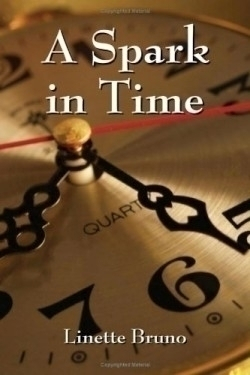A Spark in Time
In an article entitled “Muriel Spark’s Definition of Reality” in the journal Critique, Ann B. Dobie states, “The basic intention of Muriel Spark’s novels has not always been clear to critics….”
Linette Bruno, an English teacher on the French island of Martinique, claims she has found the key that decodes Spark’s cipher-like work. She insists in her dissertation, A Spark in Time (a cute title with multiple meanings), that Spark’s enigmatic writing is more accessible and even more enjoyable if readers understand that as a writer, at some spot in her oeuvre, she became enthralled with the concept of time. Bruno suggests that after Spark reached a pivotal or “prime” point in her life she based her work on the “seven ages of man,” referencing the Shakespearean “All the world’s a stage…” quote from the play, As You Like It. Bruno writes, “the whole cycle of life can be traced throughout her [Spark’s] work, one of birth, growth and decay, a process perpetually repeated. Old men become babies again. Schoolboys (or girls) grow into their prime. Lovers, lawyers, bachelors, spinsters, all make their way across the stage in her fiction.”
Analyzing what Bruno considers to be Spark’s best novels—Memento Mori, The Prime of Miss Jean Brodie, The Girls of Slender Means, The Mandelbaum Gate and The Driver’s Seat—she attempts to apply her theories about time to Spark’s writing. First, Bruno provides the reader with biographical material about Muriel Spark. She cites that the three most influential times in Spark’s life in regards to her creative writing were “…her childhood and youth; her conversion to Catholicism; and her entering on her prime.”
The reader is given a quick synopsis of all five of Spark’s novels and Bruno attempts to find passages to support her time claims. It is difficult for the reader to comprehend some of the writing in A Spark in Time, for example, the following is written about Spark’s novel, The Girls of Slender Means, “Time in the novel, THE GIRLS OF SLENDER MEANS is 1945, just after the end of the Second World War, and after, when we see the outcome of the 1945 experiences and learn of the death of Nicholas Farringdon. His bomb, Destiny had just gone off….”
Other critics, John Updike and Joyce Carol Oates, for example, have touched upon Spark’s use of time in her novels. Although, A Spark in Time doesn’t contribute anything substantially new to the literary criticism of Muriel Spark, if one overlooks the periodic awkwardness of the prose, the book is an exceptional introduction to Spark’s works and a remarkable tribute to her brilliance.
Reviewed by
Lee Gooden
Disclosure: This article is not an endorsement, but a review. The publisher of this book provided free copies of the book and paid a small fee to have their book reviewed by a professional reviewer. Foreword Reviews and Clarion Reviews make no guarantee that the publisher will receive a positive review. Foreword Magazine, Inc. is disclosing this in accordance with the Federal Trade Commission’s 16 CFR, Part 255.

